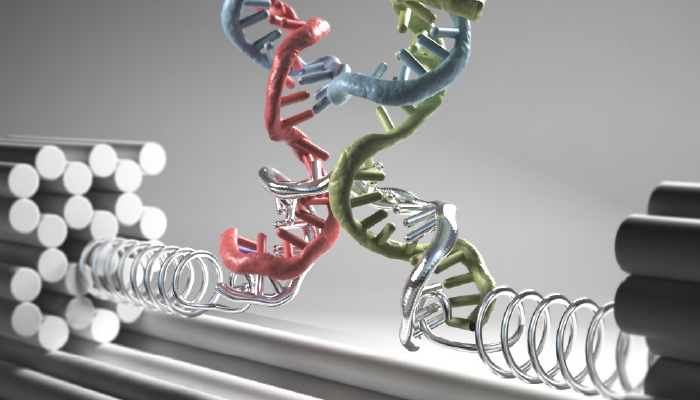Tim Liedl: Control on the nanoscale with DNA origami
This talk by Prof. Tim Liedl is hosted by the Department of Neuroscience and Biomedical Engineering (NBE).
Map © OpenStreetMap. Some rights reserved.
Prof. Tim Liedl
Ludwig-Maximilians-Universität
Munich, Germany
Time: Thursday, May 17th at 15.15
Place: Dept. of Neuroscience & Biomedical Engineering (NBE), Aalto University, Rakentajanaukio 2C, Room: F336
Host: Anton Kuzyk
ABSTRACT
I will discuss two recent applications of DNA origami that illustrate the exceptional control that this technique provides on the nanoscale (1,2).
Despite enormous efforts, placing guest molecules in designed DNA crystals remains a challenging goal. Ned Seeman and Chengde Mao reported a 3D DNA crystal based on the "tensegrity triangle", where three DNA duplexes are interconnected in a self-restricting over-under, over-under, over-under fashion. By adopting their design principle, we present a tensegrity triangle design based on DNA origami that crystallizes into three-dimensional, micrometer-scale assemblies that can host gold nanoparticles at designated sites.
Then I will present a DNA origami-based method of force spectroscopy that uses self-assembled nanoscopic power gauges, requires no macroscopic tools (magnetic tweezer, AFM tip or alike) to connect to the macroscopic world and can analyze large numbers of molecules in parallel. The read-out of this force device is currently done optically, but also other non-invasive means of data acquisition are possible. To exert the force, a single-stranded DNA that contains a specific sequence capable of recruiting a molecule of interest spans from one arm of the DNA origami force clamp to the other. The force applied to the system can then be tuned by changing the length of the single strand base by base in different variants of the force clamp. Note that the ssDNA here acts as an entropic spring element, whose spring constant is dependent on the number of bases per unit length and temperature. In our experiments we first used a well-known Holliday junction sequence as a benchmark and then determined at which forces the TATA-binding protein (TBP) does not bind its stretched target region anymore.
REFERENCES
1. T. Zhang, et al. 3D DNA origami crystals. arXiv:1706.06965.
2. P. C. Nickels, et al. Molecular force spectroscopy with a DNA origami–based nanoscopic force clamp. Science 354, 6310, pp. 305-307 (2016).



